When cleaned and polished, aluminum wheels have the potential to shine like chrome. Aluminum is a relatively soft metal, which means it responds well to polishing. Cleaning and polishing aluminum is very rewarding and it is an absolute must if you want to keep aluminum wheels looking like new.
Bare aluminum has a tendency to oxidize. Oftentimes, OEM aluminum wheels have a protective coating on top to prevent aluminum oxide. In the case of coated aluminum, you'll need wheel cleaners and polishes that are safe on coatings. On the other hand, if your aluminum wheels have no coating, you can afford to use a stronger aluminum polish. This guide is intended for bare aluminum wheels.
Note: You can tell if there is a coating on aluminum by applying a little polish in an inconspicuous spot. As you rub, if no black residue appears, there is a coating over the aluminum. Aluminum oxide comes off as a black residue if you're working on uncoated aluminum. If you think they may be clear coated, see our guide entitled, How To Clean and Polish Clear Coated Wheels.
Brake dust is made of an adhesive and carbon fibers that come off the brake pad and tiny metal shavings from the rotor. The intense heat and friction generated by the wheels makes this mixture highly corrosive. Because you probably drive every day, more brake dust is constantly being made. Frequent cleaning is the only way to keep your wheels safe from pitting and corrosion.
We recommend cleaning the wheels before washing your vehicle. Cleaning wheels first will prevent brake dust and dirty water from splashing onto a clean car.
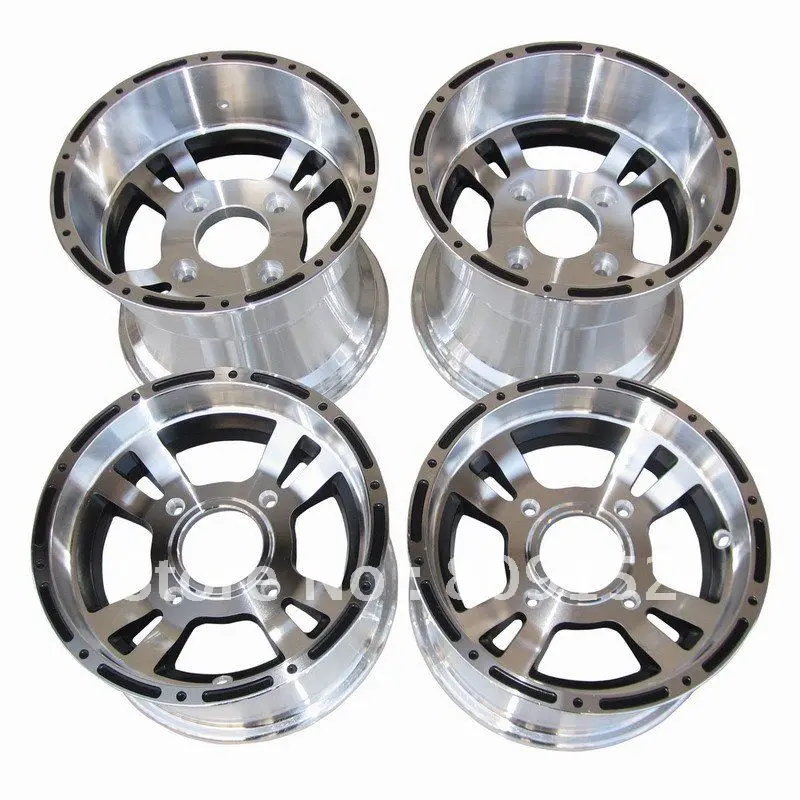 Remember, brake dust can creep into every little crevice.
Remember, brake dust can creep into every little crevice. While you're working with the brushes, the wheel should remain wet. The water and wheel cleaner help loosen grime, but they also lubricate the wheel surface to prevent scratching. You never you want to let a wheel cleaner dry on the wheel because it will spot the finish.
While you're working with the brushes, the wheel should remain wet. The water and wheel cleaner help loosen grime, but they also lubricate the wheel surface to prevent scratching. You never you want to let a wheel cleaner dry on the wheel because it will spot the finish. Water spots are unattractive wherever they appear, even on the wheels. Our Wheel & All Purpose Microfiber Towel is exceptionally gentle on the wheel finish and grabs any residual brake dust. Because the towel is black, you can you use it on wheels without ruining it. To avoid cross-contamination, use this towel only on wheels and wash it separately from your other microfiber towels. Brake dust is the last thing you want on your paint!
Water spots are unattractive wherever they appear, even on the wheels. Our Wheel & All Purpose Microfiber Towel is exceptionally gentle on the wheel finish and grabs any residual brake dust. Because the towel is black, you can you use it on wheels without ruining it. To avoid cross-contamination, use this towel only on wheels and wash it separately from your other microfiber towels. Brake dust is the last thing you want on your paint!All the tiny contaminants that stick to your vehicle's body also stick to the wheels. Even though aluminum is harder than clear coated or painted wheels, tiny airborne contaminants can pierce the metal wheel surface. Plus, brake dust is ever present. Detailing clay is a fantastic tool for removing embedded contamination from wheels. Griot's Garage Wheel Cleaning Clay is made especially for claying wheels. The good thing about this product is that you have a clearly labeled jar so it's less likely you'll confuse the wheel clay with the regular detail clay you use on the paint.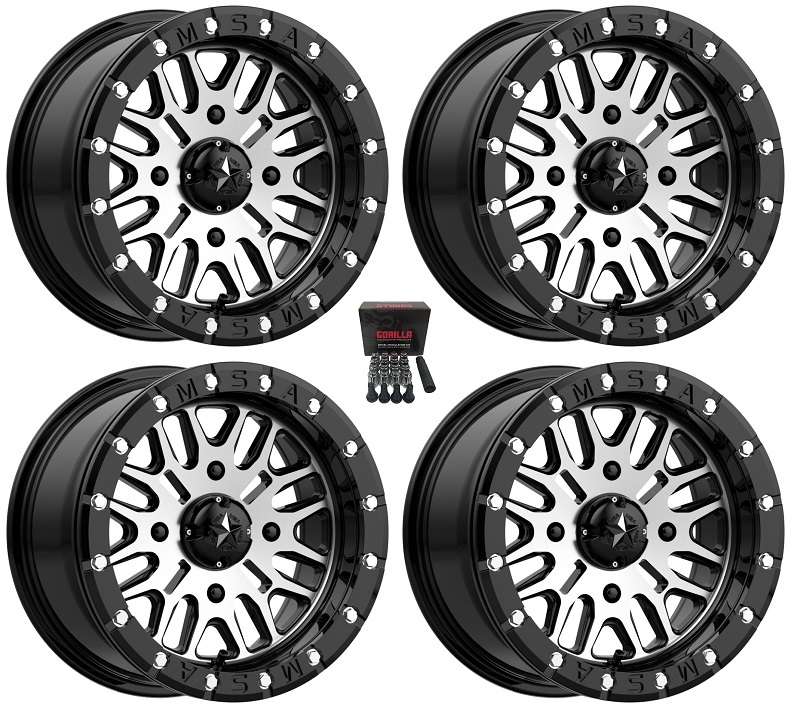 You should not mix them up! Always avoid cross-contamination between wheels and paint.
You should not mix them up! Always avoid cross-contamination between wheels and paint.
Always use wheel detailing clay after cleaning the wheel but before polishing or waxing.
| Use Flitz Aluminum PreClean on heavily oxidized aluminum. Let it penetrate for 7-10 minutes. |
Stop here if you think your wheels may have a coating and click over to our How To Clean and Polish Clear Coated Wheels guide.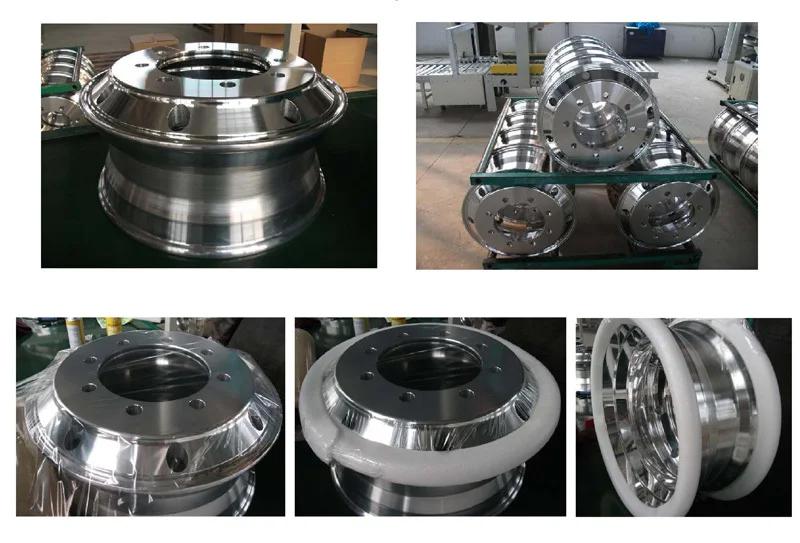
For aluminum wheels, which have no top coating, you can afford to use a polish with some bite. You'll need it to remove the aluminum oxide. Aluminum can tarnish and rust, unlike clear coated alloy, so these polishes are equipped to remove oxidation. For explanation purposes, we'll use the Wolfgang Metallwerk Aluminum System as an example. Oxidized aluminum often needs multiple steps to restore a mirror shine.
For the best results, apply metal polishes to the wheels with a polisher. In this example, we're using a FLEX L3403 VRG Lightweight Rotary Polisher with Cyclo Wool Pads. Use the 3M Quick Release Adaptor to connect the pads to the polisher. The 4 inch pads will allow you to cut through heavy oxidation on the wheel face. You may need to work between the spokes with Wolfgang Finger Pockets.
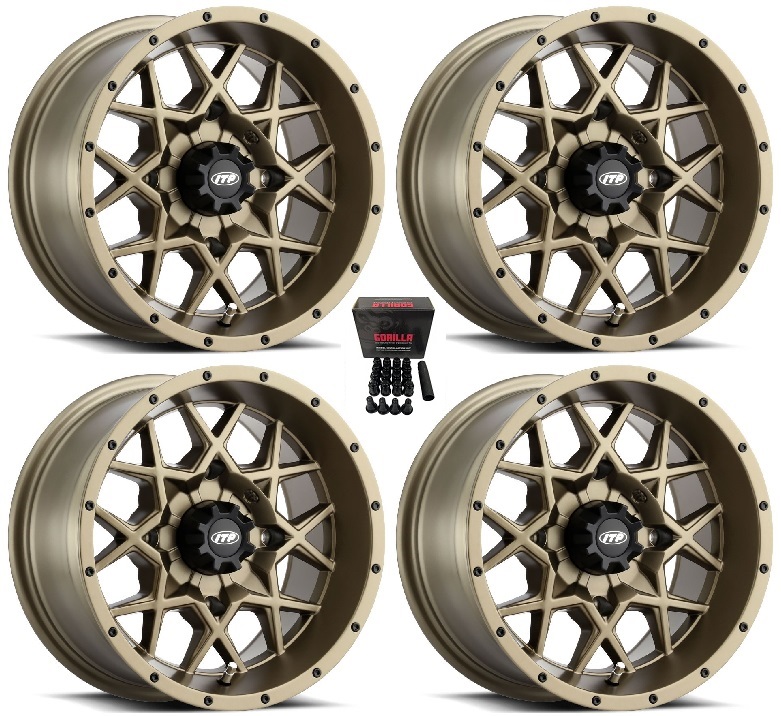 Spray Flitz Aluminum PreClean onto the wheel and let it sit for 7-10 minutes. Use a brush to agitate the surface where needed. Then rinse well with water. Dry the wheels before polishing.
Spray Flitz Aluminum PreClean onto the wheel and let it sit for 7-10 minutes. Use a brush to agitate the surface where needed. Then rinse well with water. Dry the wheels before polishing.| Use a wool pad, such as the Cyclo DoublePrecision Medium Cut Wool Pad, to apply Wolfgang Metallwerk Aluminum Compound. |
| Next apply Wolfgang Metallwerk Fine Aluminum Polish with a Cyclo DoublePrecision Blue Finishing Wool Pad. |
| Always apply wheel protection, such as Wolfgang Metallwerk Concours Metal Sealant. |

 It's an ultra fine polish that puts a mirror shine on aluminum. Wipe it on using a foam or microfiber applicator.
It's an ultra fine polish that puts a mirror shine on aluminum. Wipe it on using a foam or microfiber applicator.Once you've got your wheels looking flawless, apply Wolfgang Metallwerk Concours Metal Sealant to protect the aluminum and help prevent oxidation. It's made for all metals.
You can also use a wheel-specific protectant like Detailer's Pro Series Wheel Glaze or Wheel Wax to seal the wheel surface.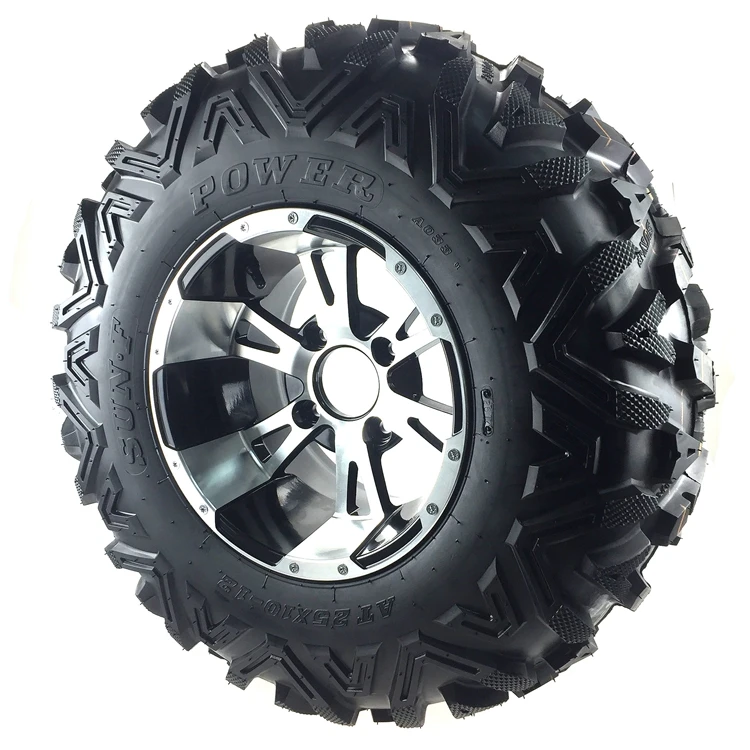 These products work just like car wax. Apply them with an applicator pad and then buff the wheel. They keep your wheels looking shiny, and they prevent brake dust adhesion. Your wheels look cleaner longer. You have to reapply these products weekly, but it's better than scrubbing your wheels every two days. The good news is, if you use a wheel wax as recommended, water is the only thing you need to clean your wheels between waxings.
These products work just like car wax. Apply them with an applicator pad and then buff the wheel. They keep your wheels looking shiny, and they prevent brake dust adhesion. Your wheels look cleaner longer. You have to reapply these products weekly, but it's better than scrubbing your wheels every two days. The good news is, if you use a wheel wax as recommended, water is the only thing you need to clean your wheels between waxings.
| Before: These wheels were white with oxidation. | After: The same wheels are shiny and reflective. |
Choose your tire dressing carefully. Old-fashioned tire dressings contain silicone, which produces a glossy shine but it turns brown over time. In fact, shiny silicone tire dressings can attract dirt. These dressings deplete the rubber's plasticizers faster, causing it to age prematurely.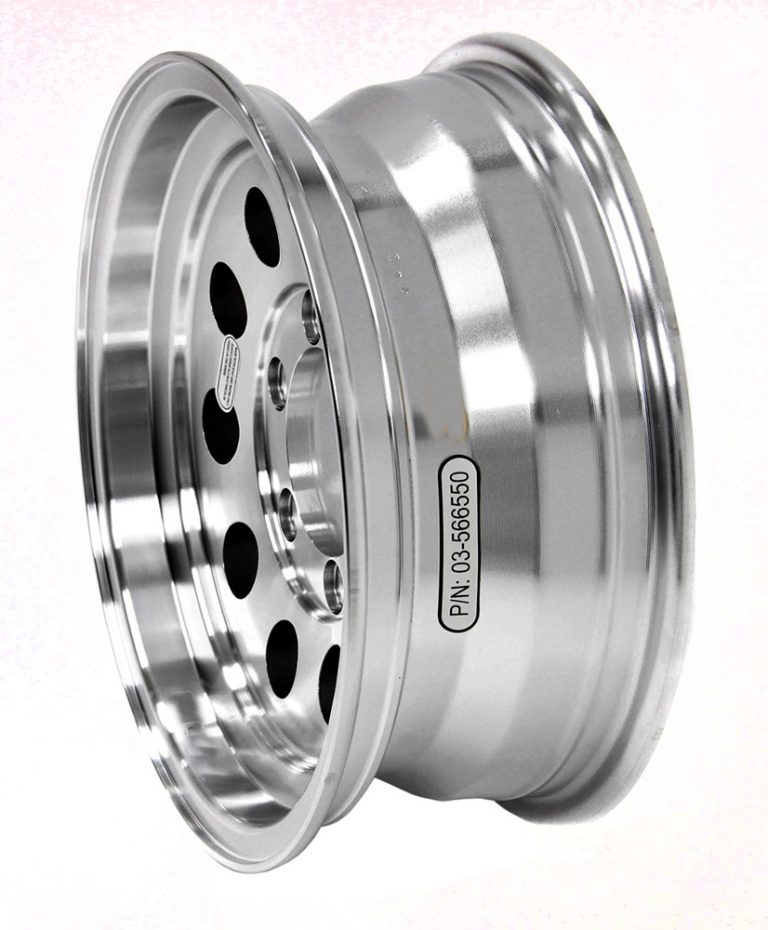 Newer formulas, like Pinnacle Black Onyx Tire Gel or Optimum Opti-Bond Tire Gel, are water-based and less shiny, but less shiny is the concours look you want. These dressings create the look of new tires with a semi-gloss sheen that doesn't turn brown. Pinnacle Black Onyx Tire Gel also nourishes the rubber to recreate the look of new tires. You can often layer water-based dressings to get a glossier shine. Follow the directions on the label carefully. Always apply thin coats and allow drying time before you drive your vehicle. Even the best dressing will sling off if it's on too thick or it doesn't have time to dry. Avoid pooling of the dressing around raised letters and white walls.
Newer formulas, like Pinnacle Black Onyx Tire Gel or Optimum Opti-Bond Tire Gel, are water-based and less shiny, but less shiny is the concours look you want. These dressings create the look of new tires with a semi-gloss sheen that doesn't turn brown. Pinnacle Black Onyx Tire Gel also nourishes the rubber to recreate the look of new tires. You can often layer water-based dressings to get a glossier shine. Follow the directions on the label carefully. Always apply thin coats and allow drying time before you drive your vehicle. Even the best dressing will sling off if it's on too thick or it doesn't have time to dry. Avoid pooling of the dressing around raised letters and white walls.
Sort By: Featured ItemsNewest ItemsBest SellingA to ZZ to ABy ReviewPrice: AscendingPrice: Descending
JavaScript is disabled. For a better experience, please enable JavaScript in your browser before proceeding.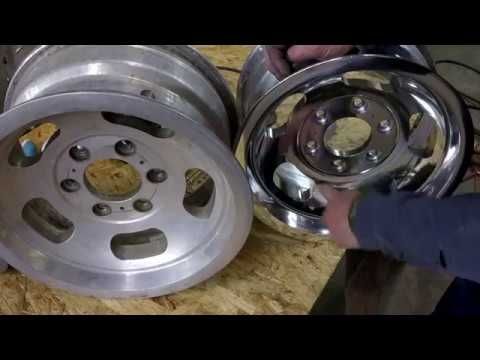
1 - 18 of 18 Posts
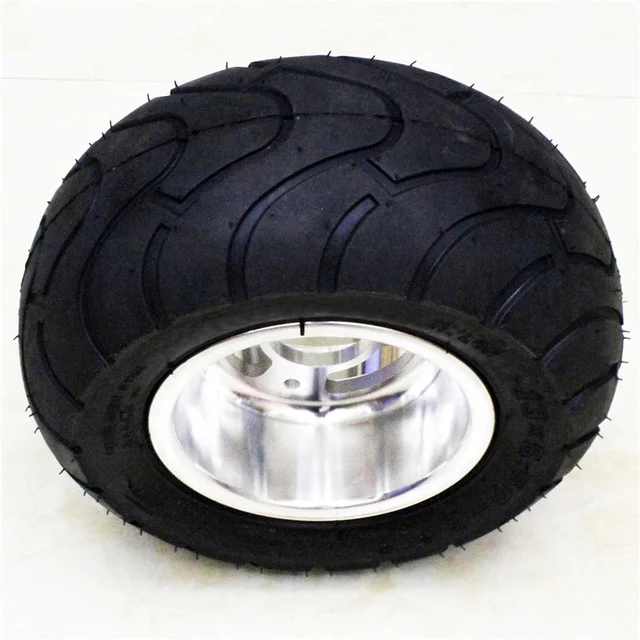 A.Rinconrider ·
A.Rinconrider · 1 - 18 of 18 Posts
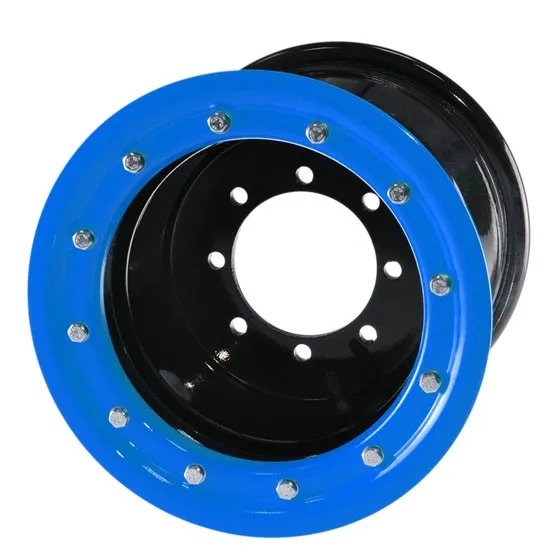 Please consider creating a new thread.
Please consider creating a new thread.Top
Photo: AvtoVzglyad
We will not consider professional car chemicals and identify the best of them. After examining the garage shelves and home cabinets, we will select the components necessary for a perfect wheel wash, which are no worse than those sold in car dealerships.
Eduard Raskin
There are hundreds of specialty chemistries designed exclusively to deal with dirt, chemicals and brake pad chips that work in tandem to create a thick and impenetrable layer of dirt on rims.
But in addition to the high price, there is another important factor that has prevented motorists from using them for centuries: they have to drive to the nearest store. And there are few people who want to break the harmony of the garage party by “driving onto public roads”. So the “wheels”, which are pretty dirty by the long and dirty Russian winter, will have to be scrubbed with the help of those special equipment that can be found within a radius of 150 meters.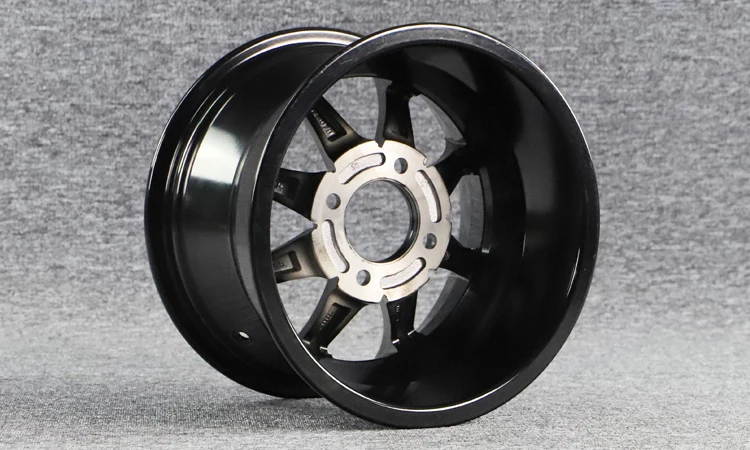 That is, no further than the local supermarket.
That is, no further than the local supermarket.
Having passed the liquor and vodka department with your head held high, you need to find that tiny corner where household chemicals are presented. Sometimes liquids, with which home disasters are leveled, cope with hardened dirt no worse than professional formulations. For a global spring cleaning of wheels, a toilet bowl cleaner is perfect. One bottle, by the way, is enough for several sets at once, and you shouldn’t chase brands - the worse the packaging looks, the more powerful the composition. Therefore, do not neglect your health, and purchase a pair of thick rubber gloves there.
The cleaning process takes quite a long time: the disks must be rinsed with water, then a diluted toilet bowl cleaner should be applied to the places where dirt accumulates and the “chemistry” should be allowed to work for 15-20 minutes. Alkali, which is included in the composition, can corrode not only dirt, but also a layer of varnish, so it is not worth tightening with subsequent washing.
By the way, if you don't have a "hot" scoop for washing toilet bowls in the store, you can replace it with an equally effective "drug" for cleaning tiles.
Another high-quality solution for complex cleaning will be effective representatives of household chemicals, designed to remove carbon deposits from the grill grate and the inner walls of the oven. As a rule, these products are sold in a small container with a spray, so it is much more convenient to work with them: rinse the wheel, spray, wait three to five minutes and then rinse again.
It should be remembered that they contain substances that are "too tough" not only dirt, but also varnish. Moreover, in the case of "chemistry" for the grill, the varnish covering the rim can not only become cloudy, but also begin to come off. To prevent this from happening, you need to reduce the time of "direct contact": apply several times and rinse thoroughly.
In addition to blue electrical tape, a slotted screwdriver and a “13” wrench, in every Russian garage there is a bottle of white spirit, aka nefras, aka Stoddard's solvent.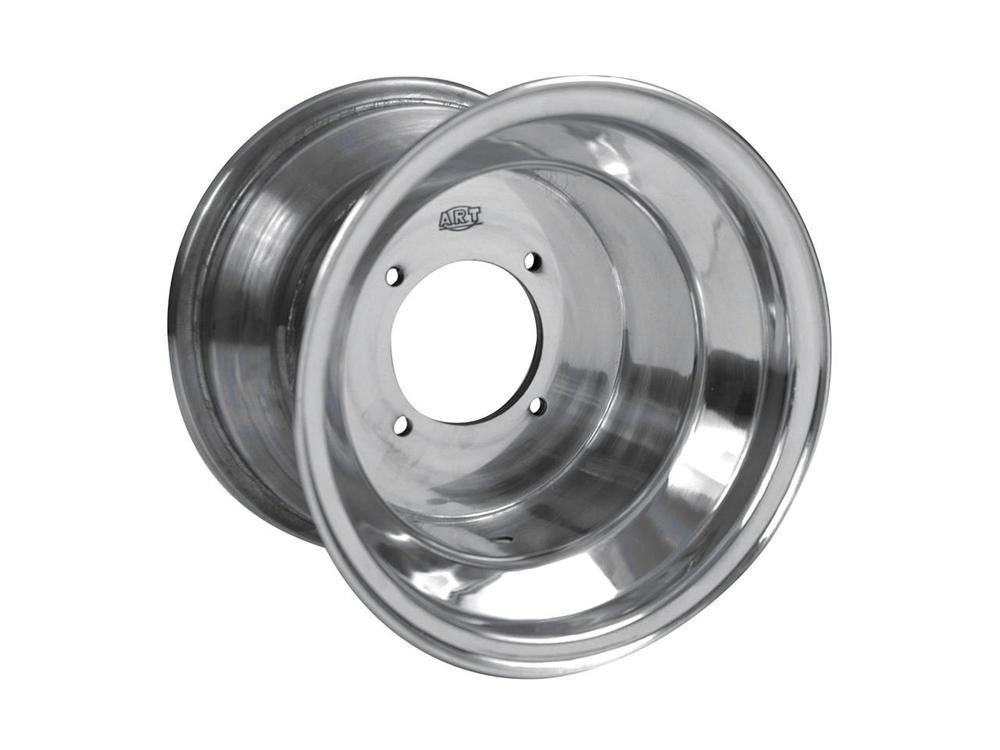 It is not known who, why and when acquired it, but its presence is guaranteed by the very existence of garage cooperatives.
It is not known who, why and when acquired it, but its presence is guaranteed by the very existence of garage cooperatives.
Despite the huge number of different uses, primarily white spirit is a solvent that is used by the paint and varnish industry to dissolve paints, enamels and varnishes. Therefore, it is necessary to erase traces of bitumen from the hood with white spirit very carefully - there is a great chance of damaging the paintwork.
But it will cope with the dirt on the rims in the best possible way: after washing off the dust with a cloth soaked in a cult solvent, we begin to carefully, layer by layer, erase the pollution. After achieving a satisfactory result, it is necessary to rinse the wheels well with running water - there is a risk that the top layer of the coating will become cloudy.
White spirit "can't be missing", but it can easily run out. You can replace the folk solvent with a carburetor cleaner. In the process of work, deposits form in the “carb” and dirt accumulates - gasoline, alas, is not always clean with us.
To remove “traces of use”, “chemistry” is used, which most often includes acetone. The carburetor cleaner has undoubted advantages that are very useful when washing rims: firstly, it contains additives that provide a protective layer, as well as various compounds that enhance the cleaning effect. Secondly, the aerosol is often equipped with a tube, allowing you to apply the product to the most inaccessible areas. Analogues are compositions for cleaning the injector and throttle valves.
As with strong chemicals, carburetor cleaner must not be left on the surface for long periods of time: the harmless contact time for the paintwork is no more than five minutes. After you need to thoroughly wash the disc.
If you go deep into the depths of centuries, then from ancient times the main garage "cleaners" were acetone and gasoline. Both the first and the second can be found, if not in your garage, then in the neighbor's. Both representatives of chemical industry products have many negative factors - they work rough, corrode strongly, leave behind a hard-to-wash film - but at the same time they are incredibly productive.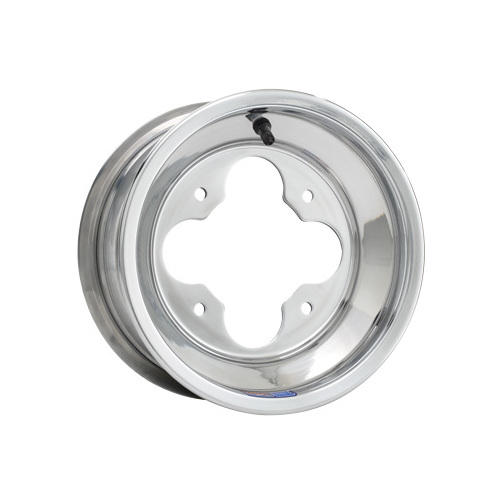 Gasoline and acetone can even wash off the dirt that has eaten into the paint! Layer by layer, you can remove bitumen, shoe shavings, and even oil paint, which is so fond of painting fences and fences in the spring.
Gasoline and acetone can even wash off the dirt that has eaten into the paint! Layer by layer, you can remove bitumen, shoe shavings, and even oil paint, which is so fond of painting fences and fences in the spring.
Cleaning rims is a private matter. After all, acetone is usually used at the sink due to its cheapness, which is likely to lead to the loss of the "casting presentation" due to the "zeal" of the washing shop employees. Therefore, it is better to take a day off and do this simple, but dirty business yourself. The process does not require special knowledge and professional skills, but this is exactly the case when no one, better than the owner, will put the car in order.
120406
when you are young and beautiful, and in the shower-Mercedes
11028
when you are young and beautiful, and Mercedes
9000 9000Subscribe to the Avtovzglyad channel:
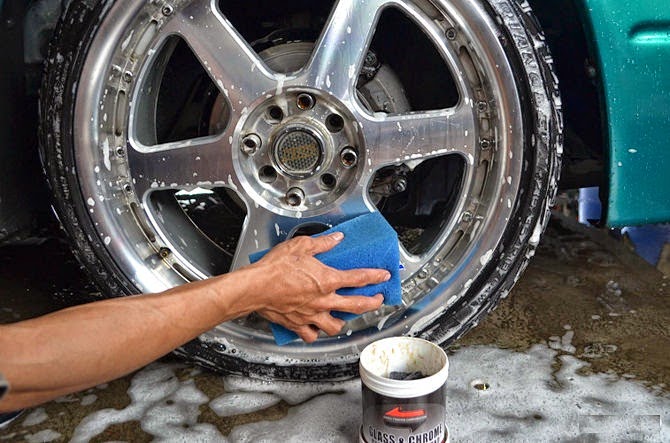 Zen
Zen car service, repair, maintenance
Car wheels are an important element of a modern car. In addition to the decorative role, the wheels perform a number of practical tasks - they translate rotational motion into translational. In addition, they transmit all the roughness of the road surface, receiving damage and scratches. Any damage sooner or later leads to another trouble - metal oxidation and rust.
This phenomenon must be combated, because the corrosion of the discs not only leads to a decrease in the aesthetic appeal of the car, but also worsens their performance. Before moving on to the issues of cleaning from oxidation, let's consider the main classification of disks.
The different wheel designs offer a wide range of choices. Fuel consumption, vehicle driving characteristics, vehicle safety, transmission life, design depend on it. Classification is carried out according to several criteria:
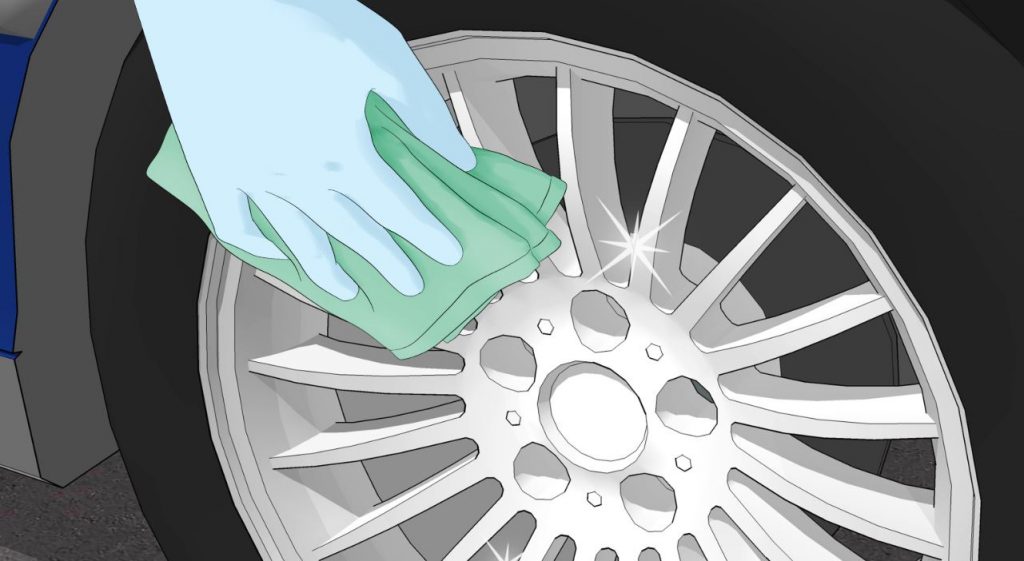
Production technology is an actual classification criterion. In this case, we are talking about steel and light alloy wheels.
Steel discs are the simplest and most common. They are installed on all budget versions of cars directly at the factory. They are made by stamping a steel sheet, the elements are interconnected using a welding machine.
Main advantages: low price, easy to restore after damage, do not deform, do not burst upon impact. Disadvantages: heavy weight, lack of sophistication, simple appearance. Low corrosion resistance leads to the fact that rust appears on the wheels. Compared to other options, steel ones provide worse handling, driving dynamics and comfort.
Light alloys are made of aluminum or magnesium. Two main production methods are used:
All alloy wheels perform better than steel wheels. At the same time, the most reliable is the forged magnesium disc, which is very durable and lightweight.
Unlike steel wheels, light-alloy wheels (regardless of alloy type) are lighter, provide a smoother ride, reduce wear on vehicle suspension elements, and eliminate vibration due to ideal geometry. An equally important advantage is the aesthetic appeal of light-alloy models, which offer different shapes and design features.
There are two types of alloy wheels - cast and forged. In terms of their qualities, the latter are slightly better, since they are lighter and stronger. Compared to steel, cast aluminum is up to 30% lighter - the design affects the final figure. Modern casting technologies allow you to create any shape. The strength of such discs is lower than that of steel. Low ductility leads to instantaneous failure upon strong impact. Cast magnesium is lighter than aluminum, but their resistance to corrosion is much lower, so you have to use special protective coatings and periodically clean them from plaque.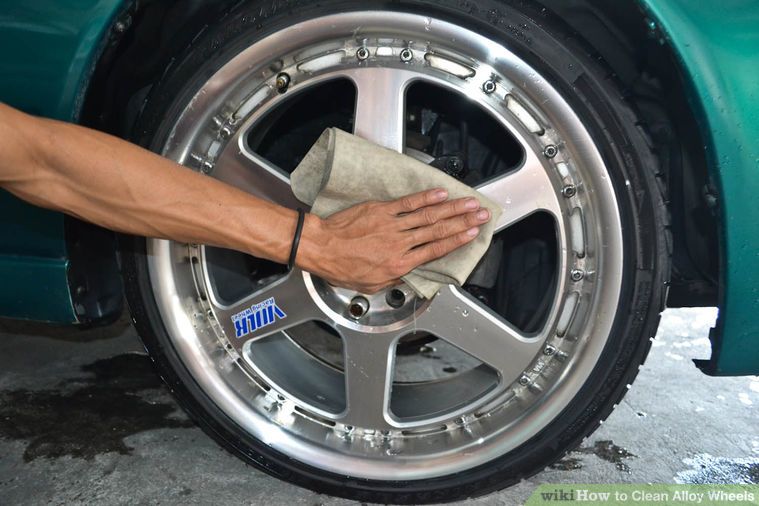
Main features:
Disadvantages:
Forged wheels are lighter than cast wheels (up to 20%) and resist corrosion better. However, they have a higher cost and a smaller variety of forms.
All parts of the vehicle near the ground are susceptible to corrosion. The main cause of rust formation is exposure to water and chemical active reagents. Roads are often treated with chemicals to counteract ice. This method is quite effective, but the reagents adversely affect rubber, metal surfaces, including those coated with paint.
In the presence of defects and damage on the metal parts of the car, rust spreads even faster. The lack of paint and other protective coatings exacerbates the situation, and corrosion spreads faster.
Different types of discs protect against rust differently. A paint coating is applied to the stamped ones to protect the metal from corrosion. The best option in this case are powder enamels, which fit snugly to the metal and are less susceptible to damage. There are unpainted wheels - they are highly susceptible to water, dirt. For protection, it is necessary to periodically apply a coat of paint.
Paintwork and special protective materials are used to protect cast wheels. Painting of disks is carried out after all operations for its formation and processing.
Plaque and corrosion must be cleaned periodically, otherwise you run the risk of big trouble, up to failure of the wheel. In addition, discs with plaque and rust stains do not look very nice.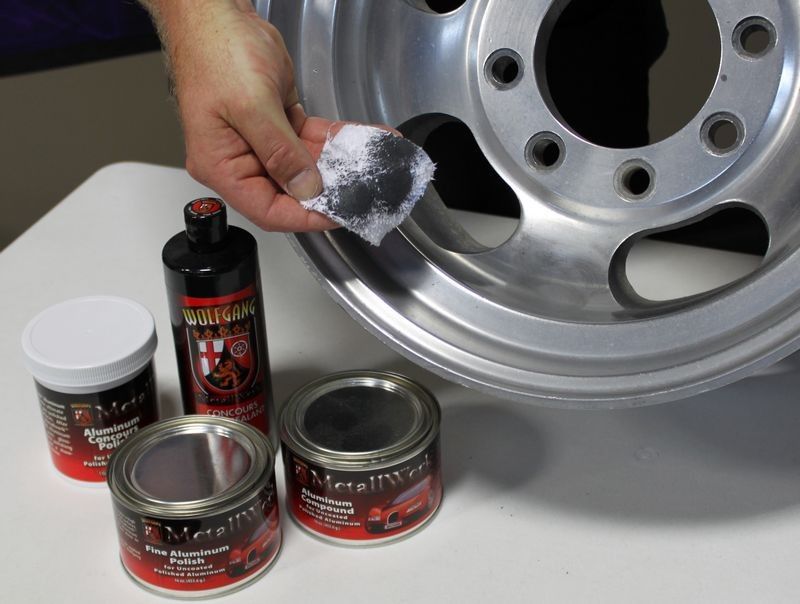
For cleaning, different types of cleaning agents can be used - special and improvised, folk. Below we will focus on some of the most popular ones.
Vinegar is a popular home remedy. This is a powerful solution that allows you to wash various deposits. This is a solution of natural acids that can act on plaque, rust, other deposits, and dirt. To create a cleaning solution, dilute vinegar in hot water. For lightly soiled wheels, this is the ideal product. It should not be used to clean polished alloys, as the acid has an adverse effect.
Cleaning products for the kitchen have proven themselves well. For example, oven cleaner is more effective than vinegar in removing grease, stains, and corrosion with ease. But there is a chance to damage the coating and paint, because the ingredients in household aerosols are quite aggressive. There is also a risk of damaging the rubber, it can become porous.
Powdered kitchen cleaners can also be used to remove dirt and grime.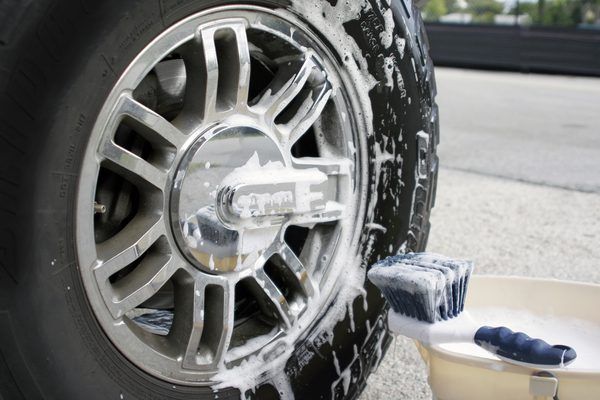 In this case, there is a risk of getting a scratch on the metal surface, since the powder consists of large abrasive substances.
In this case, there is a risk of getting a scratch on the metal surface, since the powder consists of large abrasive substances.
Summer Drive Protection Sound Comfort
Rating:
4.5
Tires Goodyear Eagle F1 Asymmetric 3 SUV
Summer Disc protection
Rating:
4.5
Tires Goodyear Eagle Sport TZ
Summer Disc protection
Rating:
4.5
Tires Goodyear EfficientGrip 2 SUV
Summer Drive Protection Run On Flat
Rating:
4.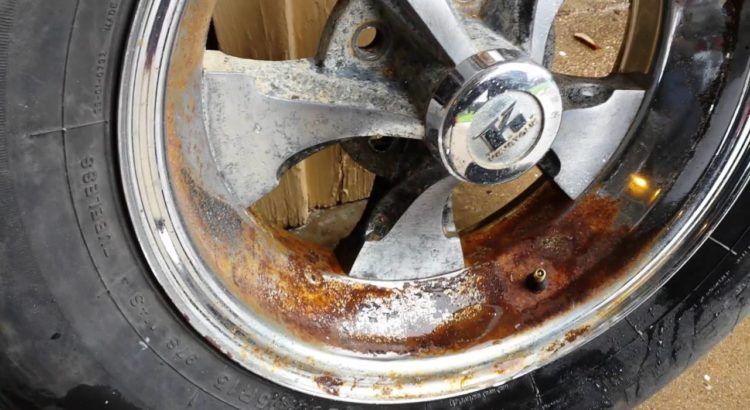 5
5
Tires Goodyear EfficientGrip Performance
Winter Disc protection
Tires Goodyear UltraGrip Arctic 2 SUV
Winter Drive Protection Sound Comfort
Rating:
4.5
Tires Goodyear UltraGrip Ice 2
Winter Drive Protection Sound Comfort
Rating:
4.5
Tires Goodyear UltraGrip Ice SUV
Winter Disc protection
Tires Goodyear UltraGrip Performance+ SUV
All season Drive protection
Rating:
5
Tires Goodyear Vector 4Seasons Gen-3 SUV
Summer Drive Protection Run On Flat
Rating:
4
Tires Goodyear Wrangler HP All Weather
All season Drive protection
Rating:
4. 5
5
Tires Goodyear Vector 4Seasons
Summer
Rating:
4.5
Tires Goodyear Wrangler All-Terrain Adventure with Kevlar
Summer Drive protection
Rating:
4.5
Tires Goodyear EfficientGrip SUV
Summer Drive Protection Run On Flat
Rating:
4
Tires Goodyear Eagle F1 Asymmetric SUV
To keep the wheel shiny, it is best to use special cleaning products.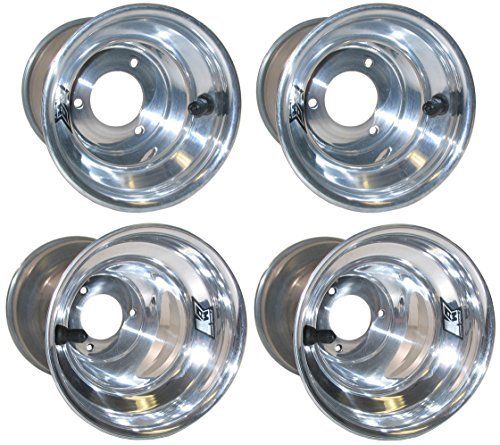 After treatment with a special solution, it will not only shine, but will also receive additional protection from fatty deposits and plaque. For cast polished wheels, it is recommended to use non-acid solutions, then the coating will not be affected by the aggressive component of automotive chemicals.
After treatment with a special solution, it will not only shine, but will also receive additional protection from fatty deposits and plaque. For cast polished wheels, it is recommended to use non-acid solutions, then the coating will not be affected by the aggressive component of automotive chemicals.
If you are doing a general wash, you can use a jet of water to clean the underside of your car of dirt and grime. But at the same time, the remnants of brake dust, tar and tar will not be washed off the road even under very strong water pressure.
The first stage is cleaning from dirt, it is better to do it with a special nozzle or simply by clamping the end of the hose.
A special cleaning agent must be applied to a disc that has been cleaned of dirt and large debris. Pay special attention to hard-to-reach places. Keep the solution for at least 3 minutes to make it easier to remove the remaining dirt.
Use a car brush to brush the surface without scratching it.